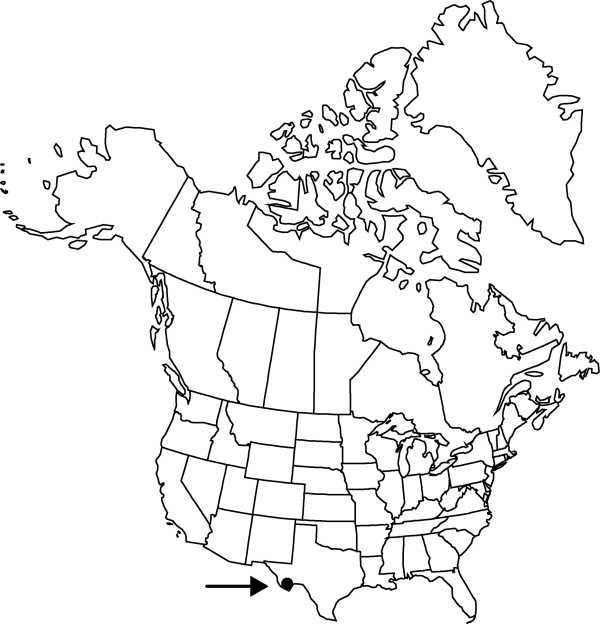Difference between revisions of "Echinocereus chisosensis"
Cact. Succ. J. (Los Angeles) 12: 15, cover, plate 1. 1940.
FNA>Volume Importer |
FNA>Volume Importer |
(No difference)
| |
Revision as of 20:00, 24 September 2019
Plants inconspicuous, unbranched or forming small lax clumps. Stems erect or ascending, short cylindric, 12.5–20(–30) × 3–5 cm; ribs (10–)13–16, crests strongly undulate; areoles 5–8.5 mm apart. Spines 11–20 per areole, straight, white, pinkish gray, pale pink, dark brown, or purplish black, tipped brown, central spines darkest (sometimes with annual rings of ± contrasting spine color); radial spines 10–17 per areole, 5–20 mm; central spines (1–)2(–6) per areole, appressed to slightly projecting or spreading, terete, 3.5–17 mm. Flowers 6–9.5 × 5–7 cm; flower tube 10–30 mm; flower tube hairs 3–5(–10) mm; inner tepals white proximally, with basal marks crimson or maroon, bright rose-pink distally, 1.8–5 × 5–16 mm, tips relatively thin and delicate; anthers yellow; nectar chamber 1–2 mm. Fruits green, 15– 35 mm, pulp white. 2n = 22.
Phenology: Flowering Mar–May; fruiting 2 months after flowering.
Habitat: Chihuahuan Desert, usually sheltered by low, perennial vegetation, desert scrub, gravelly alluvium, bajadas
Elevation: 600-900 m
Discussion
Of conservation concern.
Echinocereus fobeanus Oehme, of Mexico, sometimes has been considered a variety of E. chisosensis. Both species seem to be relicts and rare.
Echinocereus chisosensis is in the Center for Plant Conservation’s Collection of Endangered Plants.
Selected References
None.
